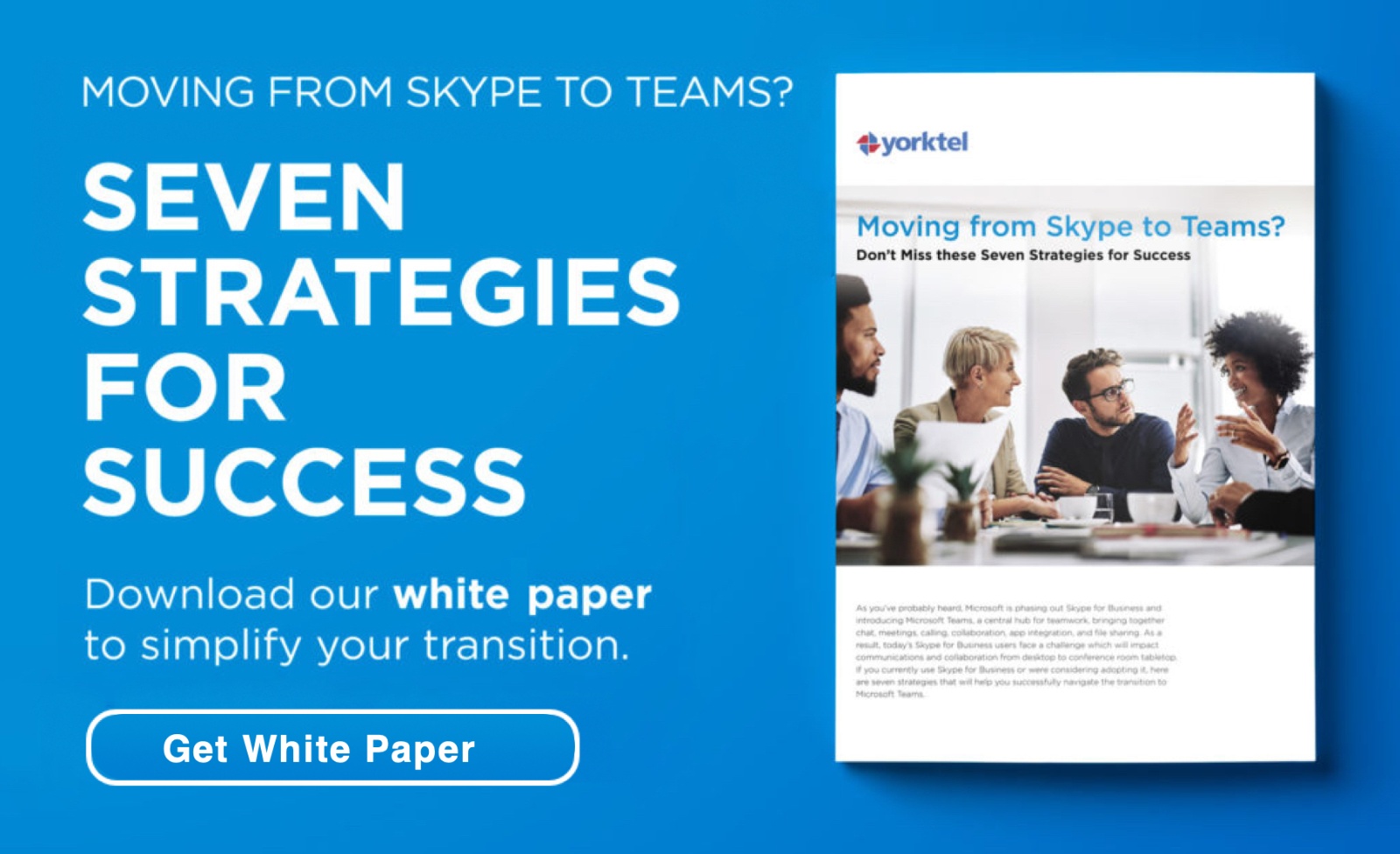As you’ve probably heard, Microsoft is phasing out Skype for Business and introducing Microsoft Teams, a central hub for teamwork bringing together chat, meetings, calling, collaboration, app integration, and file sharing.
As a result, today’s Skype for Business users face a challenge which will impact communications and collaboration from desktop to conference room tabletop.
If you currently use Skype for Business or were considering adopting it, you’ll want to create a strategy that will address ALL potential pitfalls of this transition, so your end-users aren’t left hanging and your business doesn’t suffer the consequences.
One of our suggested key strategies for success in this endeavor is:
Determine how your location on the roadmap will impact your existing network architecture, and what are the next steps?
You may be asking – what roadmap? How can I get ahold of that?
In anticipation of the transition that millions of Microsoft customers will be making from Skype for Business to Teams, Microsoft has already published a Skype for Business to Microsoft Teams Capabilities Roadmap outlining the highlights of Teams’ capabilities, the overall process and links to additional resources. Microsoft also offers a Microsoft 365 FastTrack Productivity Library offering insights on how to initiate your Skype to Teams transition quickly.
The Roadmap is a living document, constantly updated as more information becomes available and can assist with determining critical factors such as:
- Will Teams capabilities meet your business needs?
- When should you initiate the transition?
- How can you get support if you encounter difficulties?
One critical factor to be keep in mind is that Teams is 100% in Office 365, meaning it is 100% online. There are no servers required, no real estate to dedicate on premises – it is purely in the cloud.
This lack of a footprint is one of the tremendous advantages of Teams – its structure reflects the nature of its users. Teams can be described as simply a group of people that are working on a project, and the channels within that team are breakouts or sub-projects that a particular team is working on. Then there are individual members within those channels and individual workstreams. All of that is built into Teams and easy to organize, add people, create new teams and new channels. This is where your meetings and files live, running natively in Office 365.
Working with a Microsoft Partner who is familiar with the nuts and bolts of successfully making this transition can greatly reduce any potential pitfalls you may encounter along the Roadmap.
